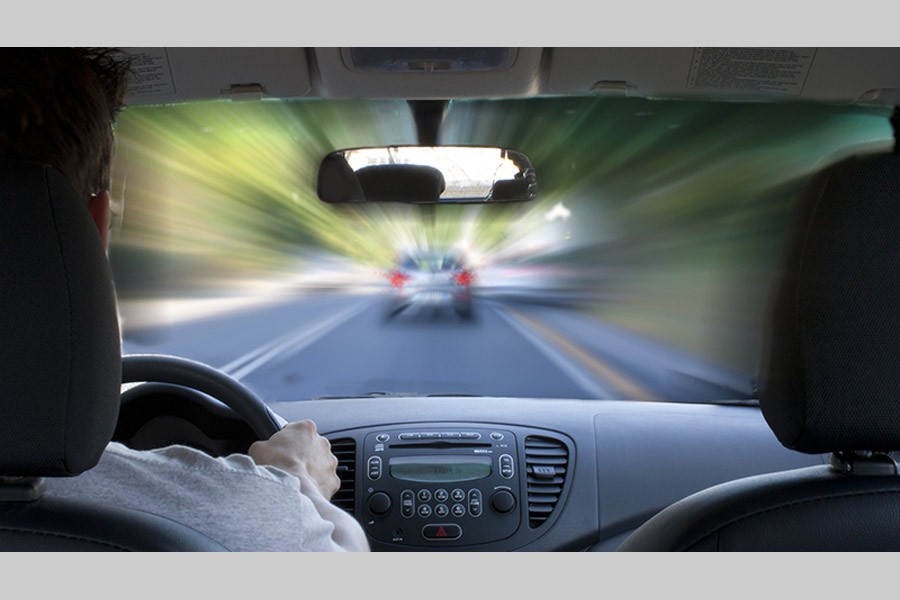
Published :
Updated :

A survey on drivers' eyesight by a non-government organisation (NGO) has revealed alarming facts. As high as 70.4 per cent drivers of public transports have poor eyesight. What is still more alarming is the fact that 64.66 per cent of them never see an optometrist. It seems, there is no legal binding on drivers to have their eyesight checked periodically. But this is a must. In advanced countries, no one can drive with vision below the legal standard. Then there is the provision for drivers to undergo eyesight check every 10 years between ages 31 and 40. Older people have to subject themselves to such tests every three years. Even then in a country like the United Kingdom, 60 per cent fail to meet the required standard of vision, according to a study. However, drivers with poor visions there are prescribed glasses or contact lenses while on the roads. No such compulsions are enforced in this country.
This, however, does not determine that of the frequent road accidents taking in this country, some or the majority of which are attributed to poor eyesight of drivers. Where the overwhelming majority of the motorists do not even see an eye specialist and this appears to be the first such survey so far and on a limited scale, the extent of neglect to the issue can be anybody's guess. But motorists require to read road signs and instructions from a distance of at least 25 metres. Drivers with deteriorated vision have problems in reading road signs and sign boards of shops or bill boards. Those who cannot read newspapers or use cell phones may have their distant vision right for the purpose. But this may not be the case for all. Once eyesight start deteriorating, it only gets worse unless treated in time. When the majority of the drivers do not visit an ophthalmologist, the problem gets further complicated.
Now that this less discussed issue has come to the light, the test of eyesight should be made mandatory for drivers. But the poor drivers are unlikely to see an optometrist because of the cost involved. Apart from a doctor's fee, the glasses they will require are likely to be costly enough for them. The owners of vehicles should come forward to help their employees out. Or, some other alternative arrangements may be made such as free eye camps where drivers will receive treatment and prescriptions. Then distribution of glasses or contacts at subsidised rates may be considered.
Last but not least, drivers are not only encumbered with their poor vision. Often low paid, they have to do overtime without rests. They have to do their duties without required outfits and advanced driving gears to protect them from air pollution and other health problems. To get acceptable service from them, there is a need for ensuring adequate wages and other facilities. The drivers in this country do not enjoy the best of working atmosphere. If their job satisfaction can be ensured, there is every possibility of bringing the best service out of them.


 For all latest news, follow The Financial Express Google News channel.
For all latest news, follow The Financial Express Google News channel.